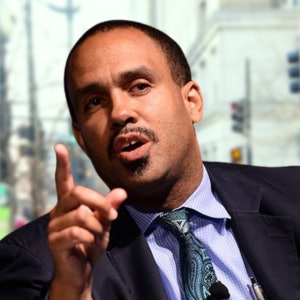Black workers, particularly young Black workers, have been harmed through a narrative informed by systemic discrimination. They’re not the only ones. Latinx workers and LGBTQ workers encounter similar struggles. But there are ways to change the pervasive narrative that can help shape policies that promote a healthier working life and wealth-earning potentials for these professionals.
 Dedrick Asante-Muhammad, president of the Joint Center.
Dedrick Asante-Muhammad, president of the Joint Center.
“Narrative change is an important part of driving policy change,” said Dedrick Asante-Muhammad, president of the Joint Center, speaking during a webinar on Wednesday and sharing the results of their study.
The new narrative Asante-Muhammad and the Joint Center hope to encourage is one that centers the young Black worker, engages relevant audiences, and informs future communities. It’s a story that can be told in every sector, from policy making, to economic study, to education.
In their examination of media coverage, the Joint Center found that a mere 11% framed young Black workers positively, including historical and economic context when discussing their challenges. However, 60% of the media examined represented Black workers in a negative light.
“[Positive media] portray Black workers as people of agency and advocates for their labor rights or creating inclusive workspaces,” said Justin Nalley, senior policy analyst at the Joint Center. “Most media pieces use a negative tone to describe young Black workers. Overwhelmingly, the content focused on the unemployment rate of these young Black workers rather than the labor market conditions or the systemic conditions leading to this pattern.”
The Joint Center proposed 13 “messaging elements” that can help create more accurate narratives. These elements include a necessary acknowledgment of the connection between racial divides and economic difficulties, and the connection between racial justice and economic justice. There must be an understanding, the report says, that racism is a tool used to create division that hurts everyone. No story about young Black and Brown workers should be told without acknowledging the historic background and systemic injustice. Stories must focus on the larger context instead of individual behaviors. The Joint Center also encouraged a moral understanding of who the villains are, those who are taking actions that are harmful to others.





















